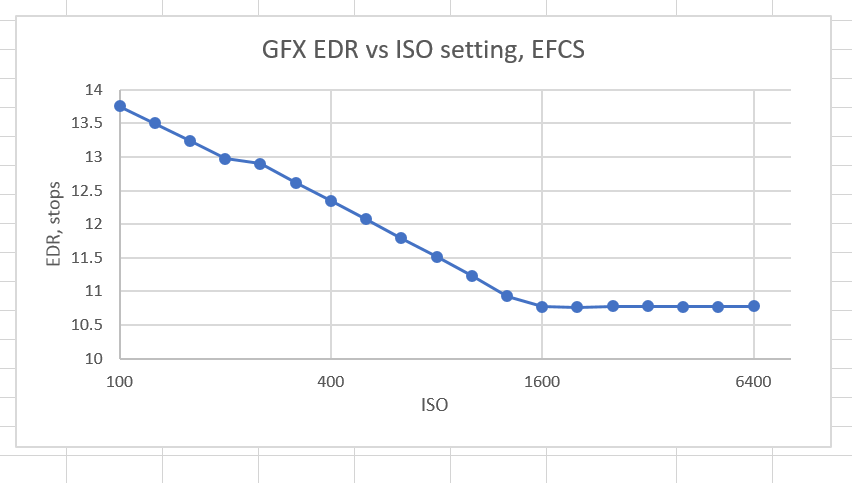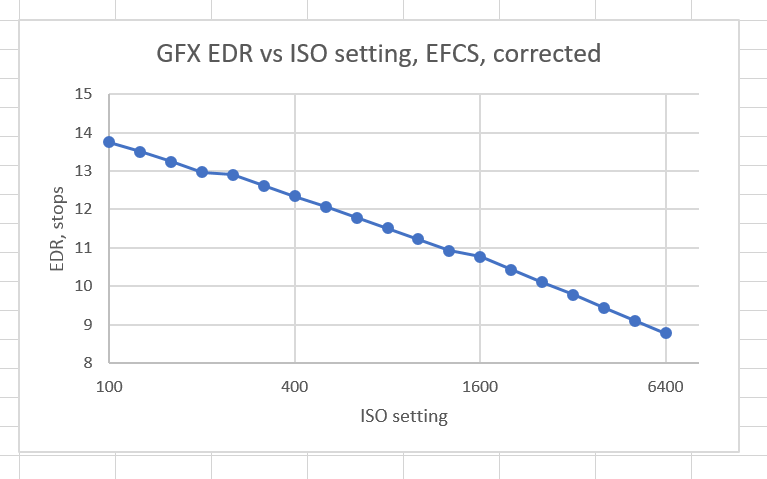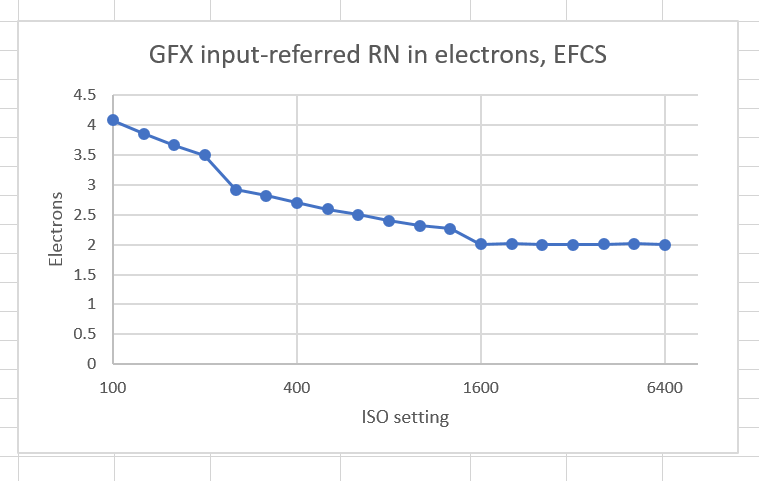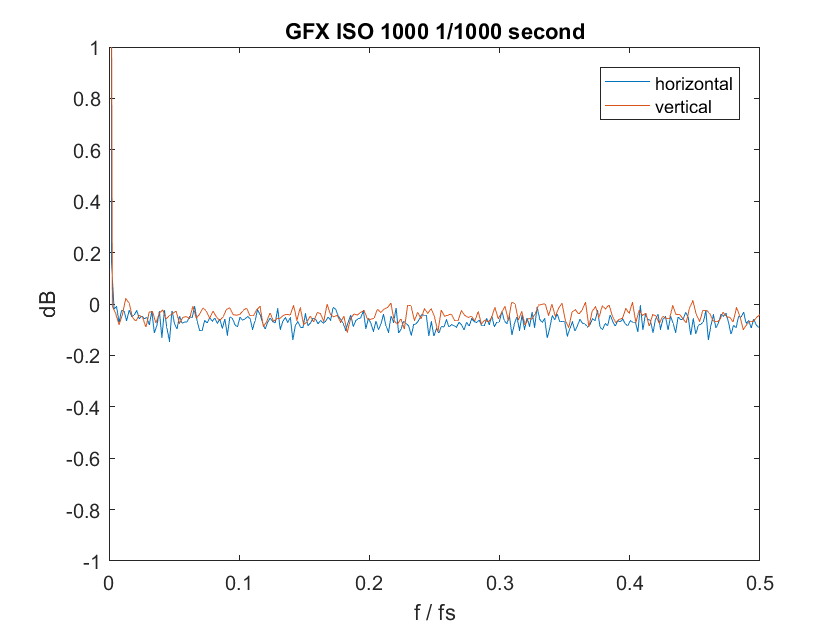This is the 27th in a series of posts on the Fujifilm GFX-50S. The series starts here.
This test almost didn’t get completed today. I had a big fight with RawDigger, and it won. Alex is helping me figure out what’s wrong, but in the meantime I ran it on another computer, where it worked fine for me. I’m setting aside the troubleshooting in order to get this out.
Sony a7x cameras use different digitization precision with different modes. Single shutter drive mode in uncompressed raw is usually, but not always, 14 bits. If you turn on compressed raw, the precision drops to 13 bits. Selecting continuous drive, silent shutter, or bulb gets you 12 bits. It’s tough to keep track of it all.
I am please to report that, at least in single shot shutter mode, that the GFX writes 14-bit raw files. It does that with the shutter set to mechanical, to EFCS, or to all-electronic. I’ll be testing the other shutter modes.
Not only that, but the read noise and dynamic range are identical in mechanical, EFCS, or all-electronic shutter modes. That is was a tester likes to see, and if I’m any example, what a user like to see, too.
So here are the Engineering Dynamic Range numbers, obtained with dark-field exposures at 1/1000 second at all ISOs from 100 through 6400, with a 400×400 pixel sample. That’s 200×200 pixels in each of the four raw planes. I usually pick a central sample for these tests, but I was worried about an anomaly being introduced by sampling the place where all four of the stitched quadrants on the sensor come together, so I offset the sample down and to the left:
I averaged the standard deviations for all four raw channels at each ISO. The black point on the GFX is 64 counts for ISOs from 100 through 200, then it jumps up to 1024.
Here’s what the Engineering Dynamic Range (EDR, or full scale divided by read noise) looks like:
I haven’t seen a camera with that flattening. What’s going on is that, after ISO 1600, the GFX stops increasing the analog gain. THat’s not unusual. What is unusual in my experience is that the camera also does not supply any digital gain in the raw file data. All it does it brighten the JPEG preview image and the finder, and put a tag in the metadata so that the raw developer will know to supply digital gain when the image is developed. I think that’s a perfect way to handle things. You’ll see in a minute that by ISO 1600, the GFX has gotten to the point where more analog gain isn’t going to buy you anything, and digital gain in the camera just limits headroom for no purpose.
If we look at what the GFX EDR would have looked like had they applied digital gain after 1600, we see this:
And, using the implied full well capacity (FWC) on Bill Claff’s web site of 50,000 electrons, we get this for input-referred read noise:
The camera is not completely ISO-less at ISOs below 1600, but it’s not strongly ISO-ful, either. Note that something good is happening at the transition from ISO 200 to ISO 250. I don’t know what that is. I am pretty darned sure it’s real, though, but Bill Claff’s curves have a similar kink at the same place, and he used a different camera(s?) and a different methodology.
I’ll be looking at other shutter drive modes and other shutter durations, but this is very encouraging.
Incidentally, looking at the spectrum of the read noise shows no evidence of raw “cooking”, and the histograms show no sign of digital scaling.
There are very faint horozontal bands in the noise distribution, and there is more noise on the left side of the image than the right, but the noise level is so low that that kind of thing doesn’t matter if you’re not an astronomer.





Good stuff Jim. Is the GFX sensor stitched? Also, interesting that the kink at ISO250 occurs at the same time that the black level changes, so they are probably reconfiguring the processing somewhat. The other dip at 1600 is also interesting. Neither effect is strong enough to suggest Aptina, would you think?
Jack
PS Have you calculated gain? It looks like Bill’s input referred figures are twice those shown above.
Jack, I am going by reports, but they say that the GFX sensor is stitched in four pieces.
Thanks, for the heads up on gain. I was imputing FWC from Bill’s data, since I haven’t made my own measurements yet. I made a factor of two error. The FWC should have been 50,000 e-, and now my RN agrees with Bill’s. It kind of has to since I’m in a sense cribbing part of his data.
As to Aptina, that could be going on. With the DR-Pix technology, the lower ISO that you change the capacitor size, the smaller capacitor ratio you can use. I kind of doubt they’d go to all that trouble for such a small change, though.
Good eyes. Thanks again.
Sony A7x bit depth reminds me of a Tokarev pistol a friend of mine had.
Sometimes he pulled the trigger and 1 shot came out.
Sometimes he pulled the trigger and 3-5 shots came out.
Sometimes he pulled the trigger and no shot came out.
I require the same kind of reliability of my camera gear as I do my weapons.
Photography is not life and death but if you’re reading this blog on a regular basis, it’s pretty damn close.